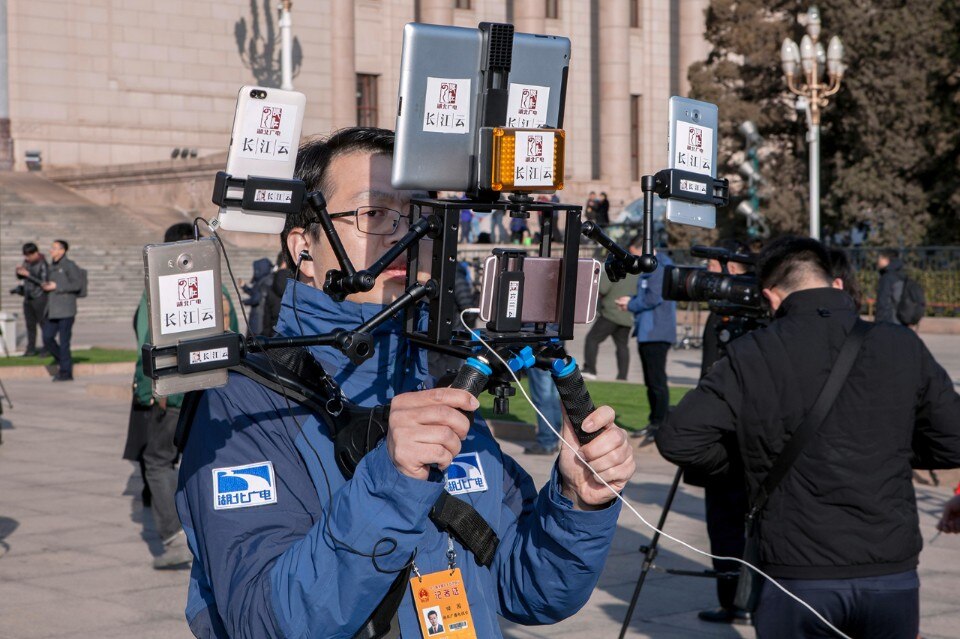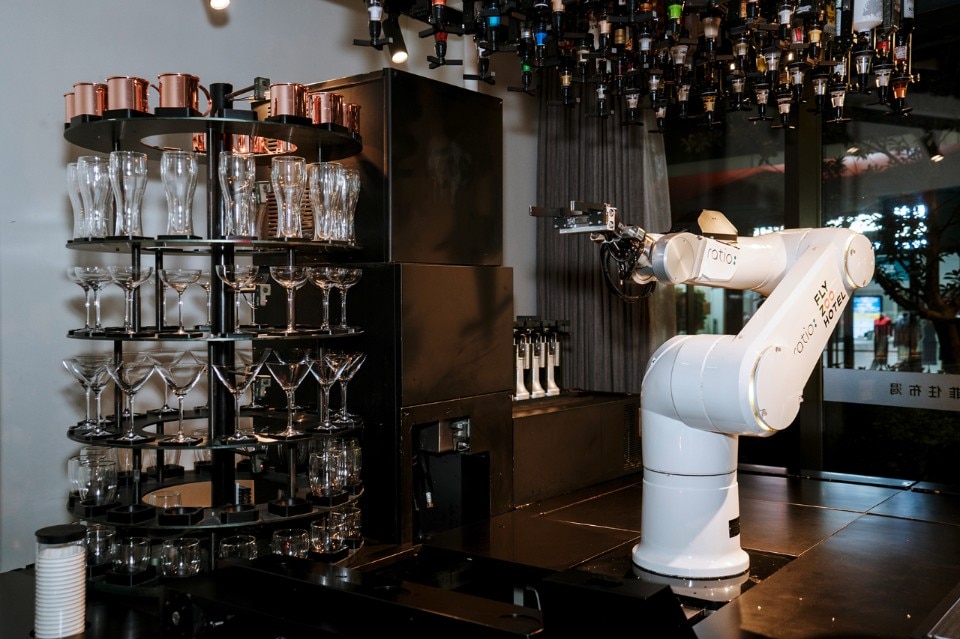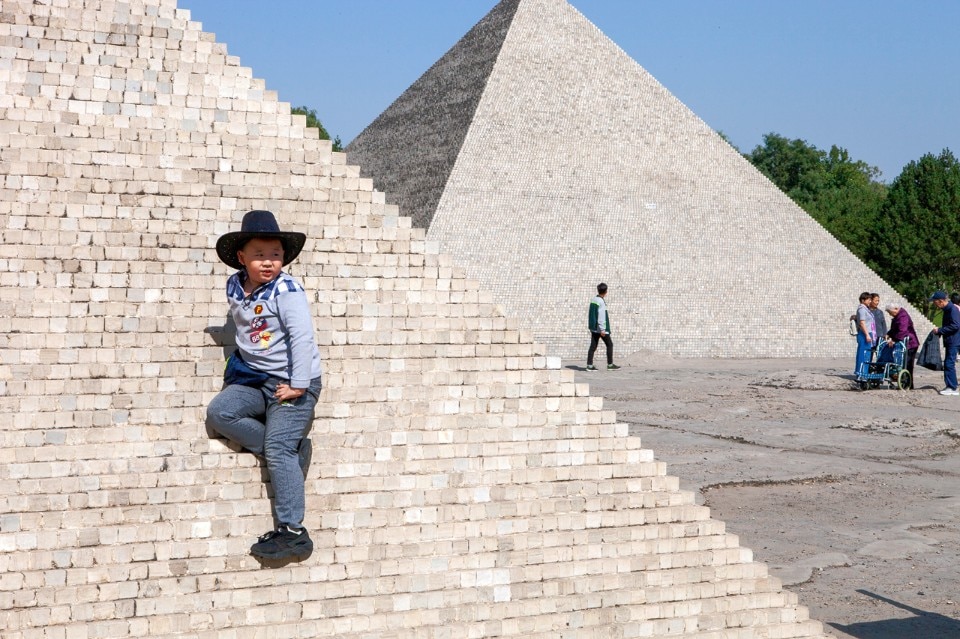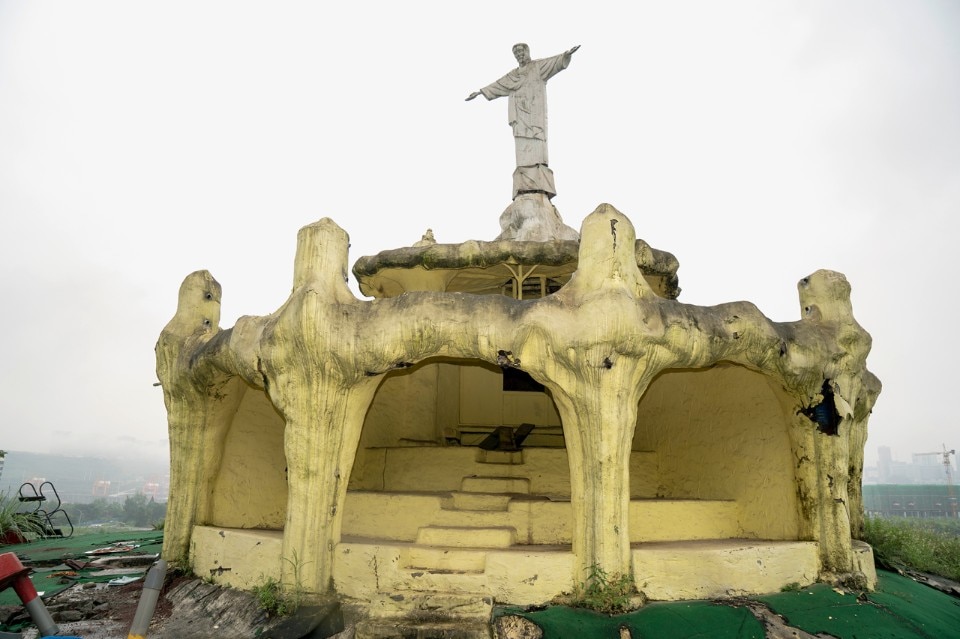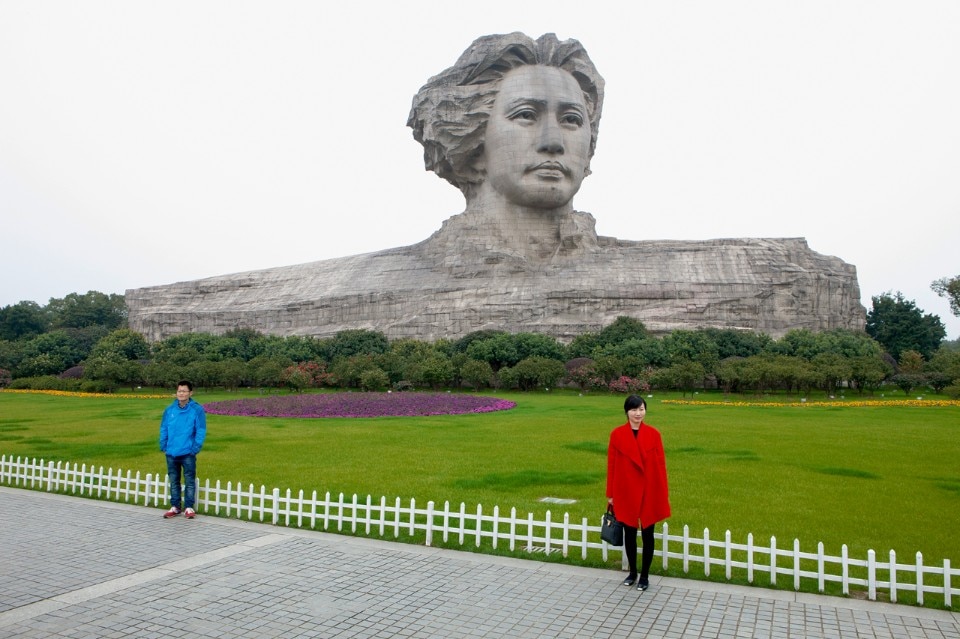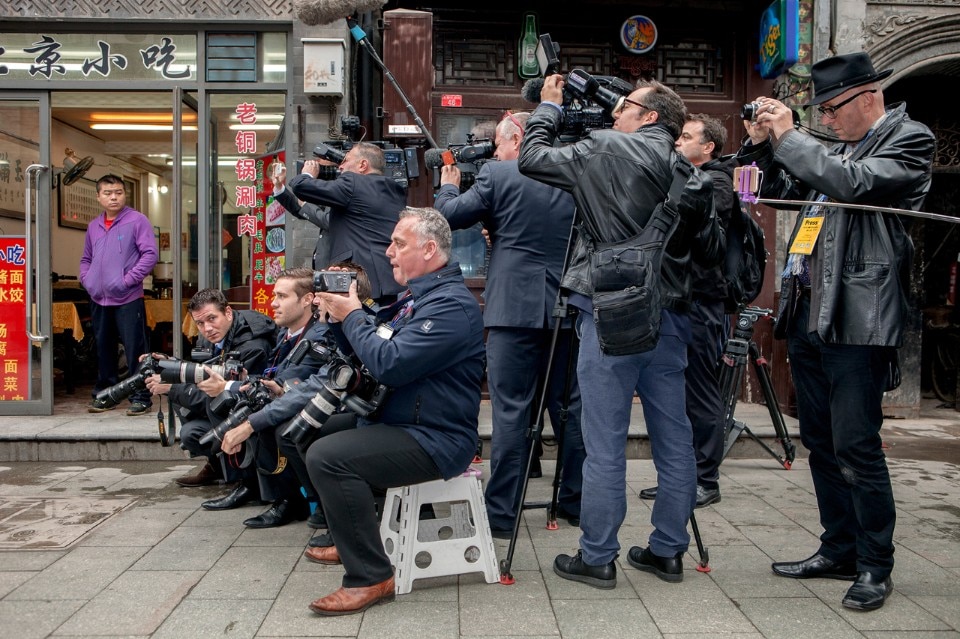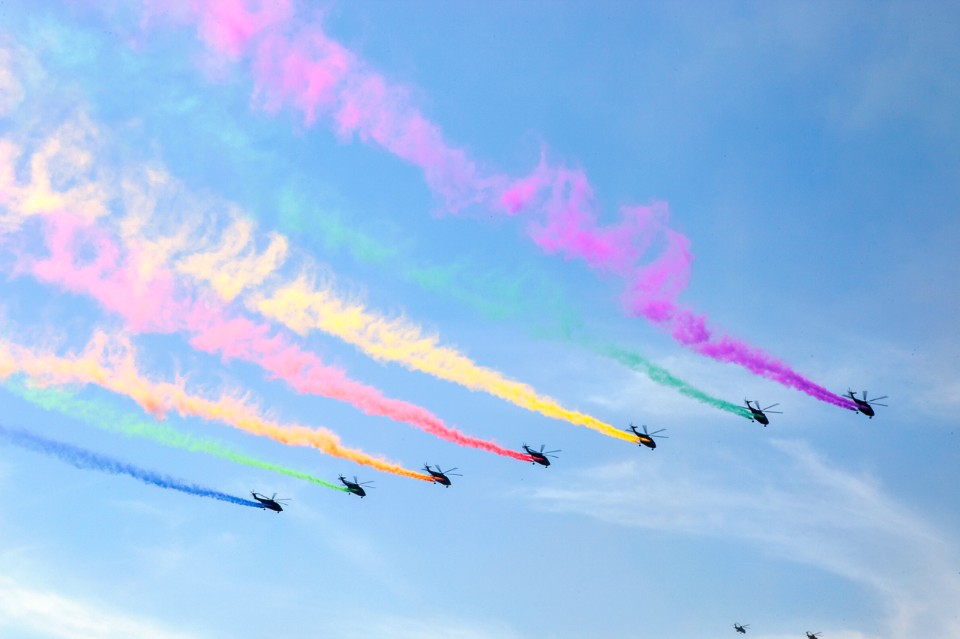A robot bartender ready to mix cocktails on repeat; a fully automatic animal dryer; a video reporter using six devices at the same time; a group of foreign journalists under the puzzled gaze of a local trader; a row of pigs' noses cooked and ready for consumption. These are just some of the many curiosities that Dutch photographer Ruben Lundgren has put at the core of Real Dreams (Idea Books, 2021), the amusing and extremely lucid account of his six years working in China on commission for De Volkskrant and other European newspapers.
If from the point of view of graphics and editing the book is a real pleasure to leaf through, with a golden cover that recalls that of an imaginary daily newspaper and the many fold–out pages that reveal surprising relationships of meaning through daring juxtapositions, what strikes us after a more careful analysis is precisely the content (and therefore the meaning, sometimes only suggested, sometimes elusive) of the individual "news".
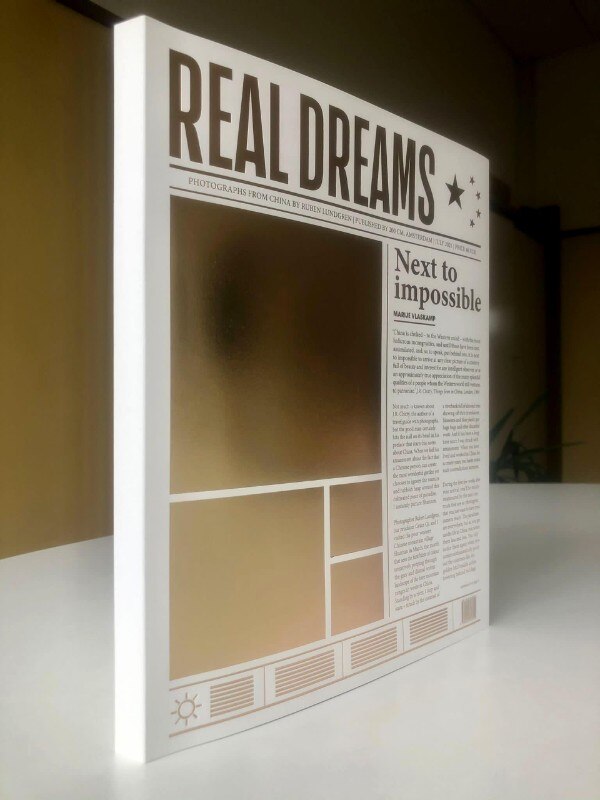
Despite being a work made over six years of travels through China, Real Dreams seems to be a concentration of stories and curiosities that, in their eccentricity, draw an imagery (and iconography) of global reach.
The book starts with a quote in which writer J.R. Chitty explains that China, within the Western mind, is choked with the most ‘ludicrous incongruities’ that need to be assimilated before one can come close to understanding the country. I’ve found that idea to be fascinating, especially since it was written over a 100 years ago. Some things did not change. I do think however that it has been more urgent than ever that both worlds get a better understanding of each other, and especially the knowledge of China in the West has room for improvement. This function has become pretty central to my recent works including Real Dreams. The book offers a spectrum of curiosities, but behind it you can often get layered reflections of Chinese society in the present day.

You have been living in Beijing for almost 15 years: what are the peculiarities of the country that only a foreigner who has lived there for so long can notice?
I think the main issue with looking at China from a foreign perspective is that you easily get sidetracked by seeing a reflection of your own issues and project them upon the country. It's more difficult to reason through a Chinese understanding. In my work I try not to take the macro perspective as you can drown in it, instead I often organically roll into photography concepts that start to have a life on their own. The book Real Dreams for example, simply started because I was asked to take photographs for a Dutch newspaper. I’m not trained as a photojournalist, but I really liked the work and the excuse it gives you to talk to people all over the country about current affairs. I used it to build a stack of images large enough to make a book out of it.
Also in Beijing, you graduated from the Central Academy of Fine Arts. What are the standards of art education in China?
After my bachelor photography at the Utrecht School of the Arts I thought about doing an MA outside of the Netherlands. I was in my early twenties and just followed my gut feeling. I did make a few friends in Beijing who were students of the Central Academy of Fine Arts, when one of them came up with the idea to study there as well, I was intrigued. It felt like jumping in a swimming pool without being able to swim and I liked that. My theory was that in this way I would learn a lot in a short period of time. Not just about photography, but also within the structure of the school, learning the language and making more friends. The standards of art education were never really a criteria for me, I believe a large part of the quality of education is not what they offer but what you get out of it yourself. CAFA is a very famous university in China and I was lucky that my photography teacher Miao Xiaochun was willing to take me on as a master student. It's hard to say what I could have learned in Europe, but looking back upon the decision to study here I definitely think it has been the right one.
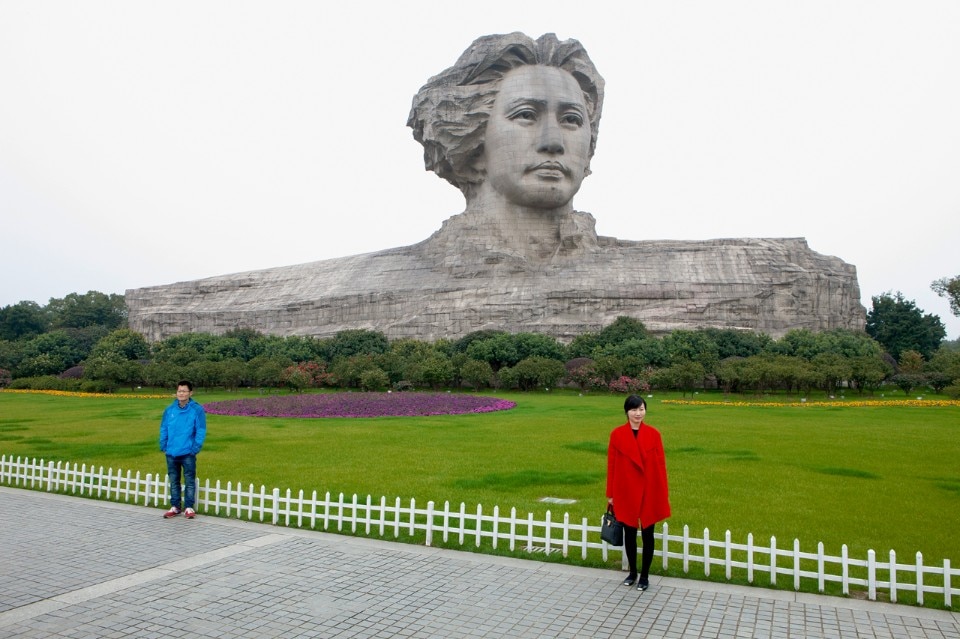
You have been part of the photographer duo WassinkLundgren, but your partner lives in London. Is there a particular strength or advantage in this dialogue at a distance?
I’ve been working in partnership until 2017. As my interest in projects related to China grew larger and Thijs groot Wassink got interested in teaching we parted ways professionally but are still in touch. The distance has never been a problem, even at the start before using facetime etc, we always have been able to communicate well. We also used to travel up and down frequently. The great advantage of working together is that you can sharpen each other's ideas and develop strong concepts this way. In that sense I miss talking to Thijs. In recent years however I did build up a lot of temporary partnerships with curators, photographers, designers, museum directors etc that replace that fixed collaboration.
The main issue with looking at China from a foreign perspective is that you easily get sidetracked by seeing a reflection of your own issues and project them upon the country.
You worked with Martin Parr on The Chinese Photobook. Is there a "Chinese way" to the book?
Yes, I’ve worked with Martin for about 8 years on The Chinese Photobook, I’m still very proud of the result. It is a view upon Chinese history from the 1900s to the present through the eyes of the photobook. As it follows the outlines of Chinese history there is an obvious block of propaganda in it but also an overview of contemporary photobook publishing. But we also pay attention to the books published before 1949 by both Chinese as foreign authors. One example is photographer Ellen Thorbecke who worked in China in the 1930s. She made a wonderful book on Beijing titled Peking Studies. In recent years I did more research on her works and published the monograph Ellen Thorbecke: From Peking to Paris with the help of the Nederlands Fotomuseum in Rotterdam.
Not sure how to define a “Chinese way” to the book though of course the book could only have been made with the help of so many Chinese book dealers, photographers and writers like Gu Zheng and Stephanie Tung. I think for any photographer, graphic designer or publisher interested in China it is definitely useful to see in which tradition you make your own works. If you look for example at the great artistic Chinese photography from the 1930’s it has many parallels with the contemporary Chinese photography scene, to me that is fascinating.
You are also a curator, with exhibitions such as “Anything That Walks”, staged at the Arles festival in 2018, and the successful “China Imagined”, in 2020. What does contemporary Chinese photography have to tell us?
My role as a curator of Chinese photography can roughly be chopped on in two parts: vernacular and contemporary. I’m a big fan of vernacular photography as it lacks pretentiousness and at the same time can be extremely meaningful, funny and recognisable for the audience. The best example of a contemporary photography show would indeed be China Imagined I curated for BredaPhoto last year in collaboration with He Yining. It is an example of one of these temporary collaborations that I was just talking about that I feel really good about. Yining and I are a great match as we are not afraid to question each other and reason in a visual way instead of a theoretical framework. In the show we had about 20 contemporary photographers and of course a great selection of Chinese photobooks. The stories they tell are very diverse. It's hard to point out trends, the only thing I did notice is the unprecedented spike of book fairs in recent years. The ABC book fairs in Beijing and Shanghai are extremely popular. Do keep an eye on Hua Weicheng, Xu Xiaoxiao but also at more established names like Pixy Liao, Feng Li, Chen Zhe, Zhang Kechun, Thomas Sauvin and publisher Jiazazhi.




